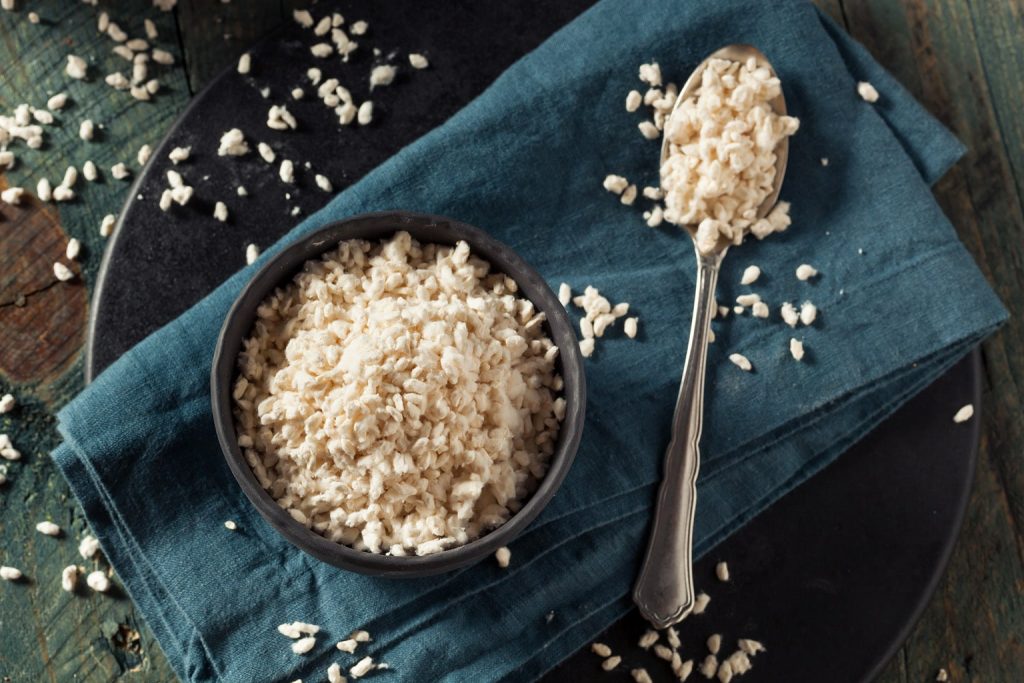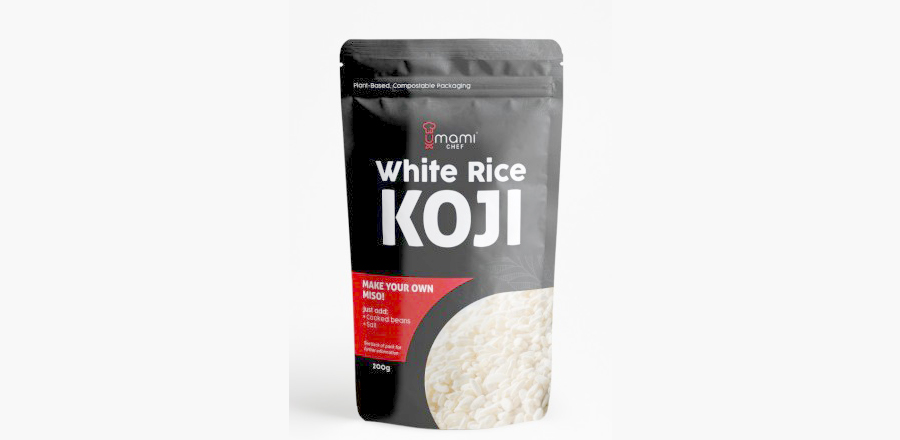
If you’ve been following our blog series and are interested in koji, the fermented rice with so many health and taste benefits, you may have checked out our entry on Shio Koji, the marinade used to give seafood and meat that deep, savoury umami flavour. Today, we’ll be taking you through how to make miso with koji rice, which you can do with white rice koji from Jackie Bailey, aka the Umami Chef!
What exactly is Koji?
Just in case you need a refresher, it’s is an inoculated grain – it contains the Aspergillus Oryzae fungus. White rice koji is created by steaming the rice, then making sure the fungus’s spores can germinate on it.
This process is carefully controlled to ensure conditions are ideal for growth by continuously monitoring temperature and humidity. The fungus then converts the starch within the rice into a range of enzymes which go on to create the umami taste that foods such as soy sauce and miso are known and loved for. Finally, before being packaged, the koji is gently dried for preservation.
The Umami Chef
This is exactly what Jackie Bailey, aka the Umami Chef, does when she makes koji. Jackie, an accomplished home cook with a particular love of Japanese food, discovered she was allergic to soy several years ago. Fortunately, she found out about koji and the potential of making miso and ‘soy’ sauce from other beans. This led Jackie, who has a background in analytical chemistry, to make koji in small batches, founding Umami Chef in Worcester in 2019; now, Umami Chef is the first approved koji manufacturer in the UK.
Jackie’s koji is naturally fermented with zero preservatives – other than the best Droitwich Salt!
What are the benefits of Koji?
- It can improve flavour naturally without the use of chemicals, additives, or extra salt
- As a probiotic, it improves gut health and helps your body absorb nutrients
- It is highly versatile: use koji to add flavour to virtually any food, from marinating your favourite fish to enjoying as a soy-free alternative to soy sauce
- It’s vegan – just rice and fungus
- It contains no major allergens such as soybeans, gluten, or celery

White Koji Rice – Umami Chef – Todelli
How to Make Miso with Koji Rice
If this has piqued your interest, read on to find out about one of the best uses of koji – making miso!
Firstly, what is miso?
Miso is a paste usually made from soy beans or barley, fermented with koji, and can be made sweet or salty.
The recipes below come from Great British Chefs, and specifically from Dean Parker, head chef of The Manor in Clapham:
‘This is a relatively quick miso recipe, as Dean usually reduces the salt content in his misos and ferments at a relatively high temperature which cuts down the fermentation time.
Sweet misos are made up of 3–7% salt and need 33% koji to bean at least. They require between 3 and 30 days of fermentation, temperature dependent – 15°C–25°C is best.
Ingredients:
• 250g of soybeans, (or other grain, seed or pulse of your choice)
• 125g of dried rice koji
• 250ml water
• 18g salt
• 250g of soybeans, (or other grain, seed or pulse of your choice)
• 40g of dried rice koji
• 250ml water
• 50g salt
• 15g miso paste
Making Sweet Miso
1
To make a 7% sweet miso, start by cooking the soy beans. Steaming is the best method here as they won’t absorb too much liquid; the dryer the miso and the longer it takes to ferment, the better the flavour will be.
2
Combine the cooked soy beans with the remaining ingredients and blitz in a blender. You can choose to blend until completely smooth or leave a little texture depending on your preference. Transfer to a container and drop on the counter a few times to get rid of any air bubbles – you need the carbon dioxide to escape otherwise the miso will ferment unevenly
3
Cover the container with muslin cloth and leave in a warm place – the warmer it is the quicker the process will be. 25°C takes around 5 days, so miso is best made in summer if you don’t have a dehydrator
4
Taste after 5 days. If you are happy with the taste, store in the fridge to halt the fermentation process, or leave it out for a few more days to develop the flavour. If you’re not in a hurry to use it, leave the miso in the fridge to develop slowly.
Making Salty Miso
1
To make a 20% salty miso, cook the soy beans by steaming – again, it’s the best method
2
Blend the cooked soy beans with the remaining ingredients, either until completely smooth or keeping a little texture if preferred. Transfer to a container and drop it on the counter a few times to get rid of any air bubbles
3
Cover the container with muslin cloth and leave in a cool, dark area for at least 1 month. As with other fermented products such as wine, miso can be aged for years, and you can achieve a variety of fruity, floral or earthy flavours depending on how long you leave it.’
To make your own miso koji, check out the rice we offer from Umami Chef:
White Rice Koji 200g
£6.25
Next day delivery

For hundreds more ideas, why not see what unique ingredients Todelli offers near you – or further afield?










